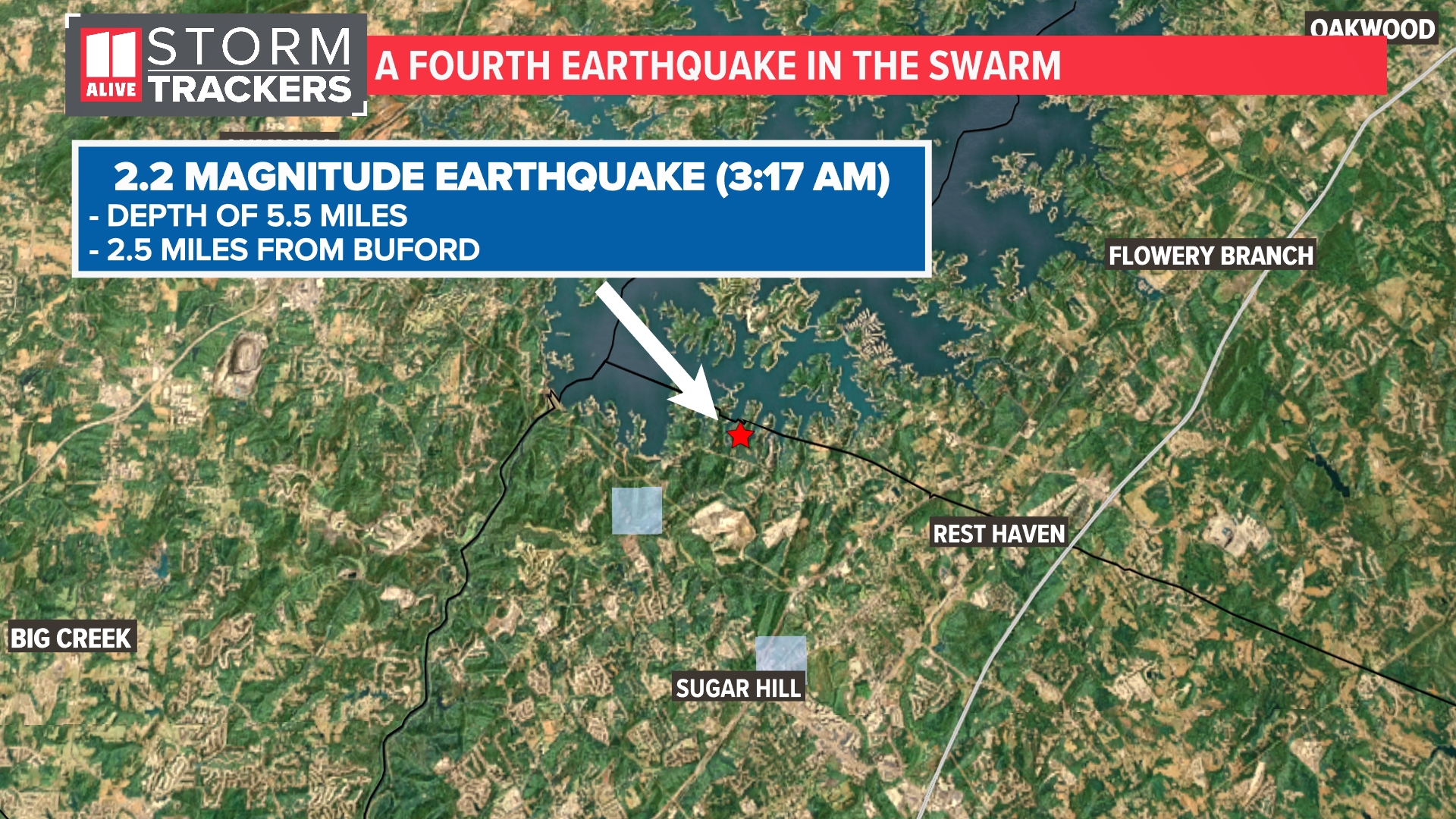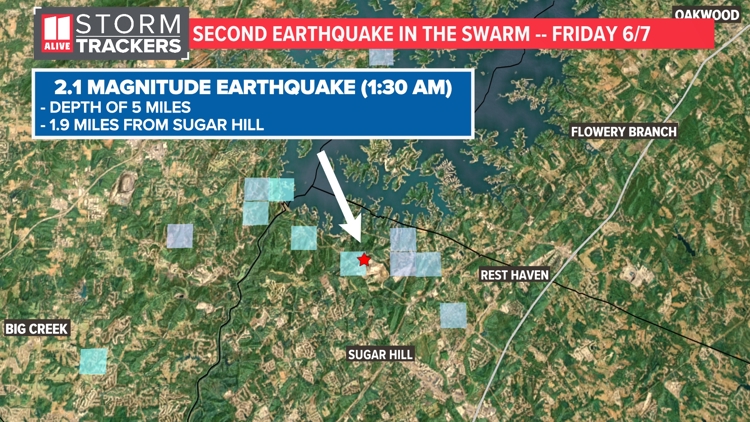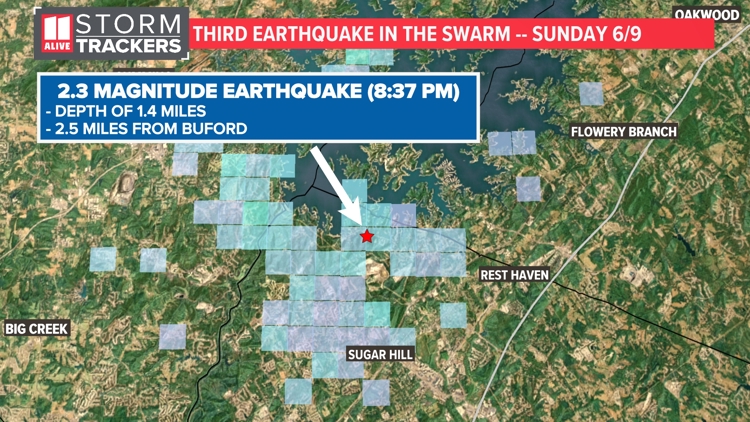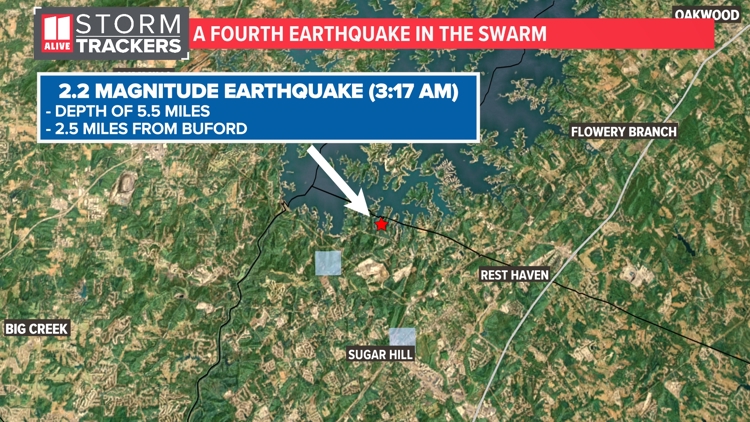SUGAR HILL, Ga. — Another earthquake shook north Gwinnett County around the south end of Lake Lanier early Thursday morning.
A magnitude 2.2 earthquake occurred at 3:17 a.m., about 2.5 miles north of Buford. The depth was about 5.5 miles below the surface of the earth, a little deeper than the previous three earthquakes.
According to the U.S. Geological Survey's shake map (featured in the image below), very few people reported feeling the shaking. Two of the three previous earthquakes were felt more widely around the southern side of Lake Lanier.
Research Scientists from The University of Georgia, Georgia Tech, and Georgia State University will begin installing a series of seismic nodes below ground Thursday and placing several above-ground earthquake sensors. They hope to gather more data if any further earthquakes occur and figure out what is causing the recent swarm.

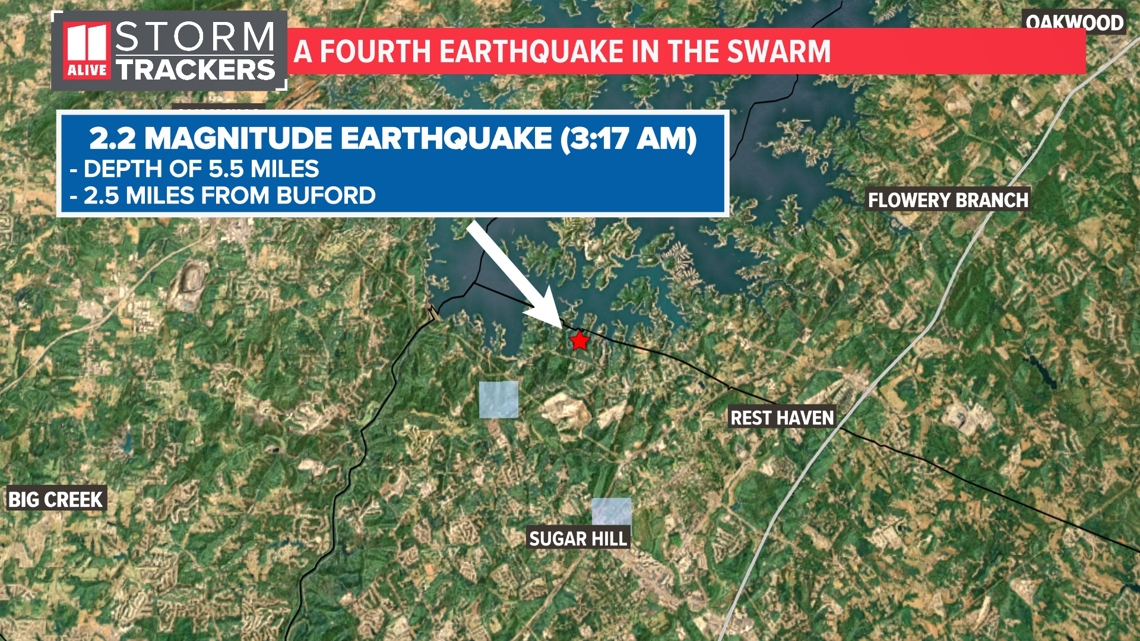
R. Scott Harris, adjunct professor and researcher with the University of Georgia, says there are two main facets of the recent seismic activity that piques his interest.
"They've all been around the same magnitude, and three out of the four earthquakes have been in relatively the same place. But what really draws my attention is the time scale of these happening. We see these earthquake swarms in the state about every six to seven years, often near Lake Sinclair. But not within days of each other," Harris added. "We see six to seven weeks in between seismic events, and then after a few events of the series, nothing for years. But we've not seen this around Lake Lanier. 'So why now?' Lake Lanier has been there for a long time. We did have water levels rising with earlier spring rains. But that's happened before, and it never caused this type of earthquake activity."
Harris said that in earthquake swarms, sometimes tension that's released in one earthquake can cause the tension to build up in another place, which can later help cause another earthquake.
According to the U.S. Geological Survey, earthquake swarms "can have many earthquakes with magnitudes similar to the largest earthquake of the sequence. Sometimes sequences don't decay over time but rather remain steady or even increase in their activity rates over periods of days, weeks, or even months. Sequences that don't fit a mainshock-aftershock pattern are typically considered swarms," its website states.
Earthquake Swarm strikes near Lake Lanier, Gwinnett County
The seismic nodes will be buried below ground, so they can pick up the smallest of seismic activities much better than an above-ground seismometer within a seismograph earthquake sensor. The group of research scientists plans to install six of these below-ground nodes.

